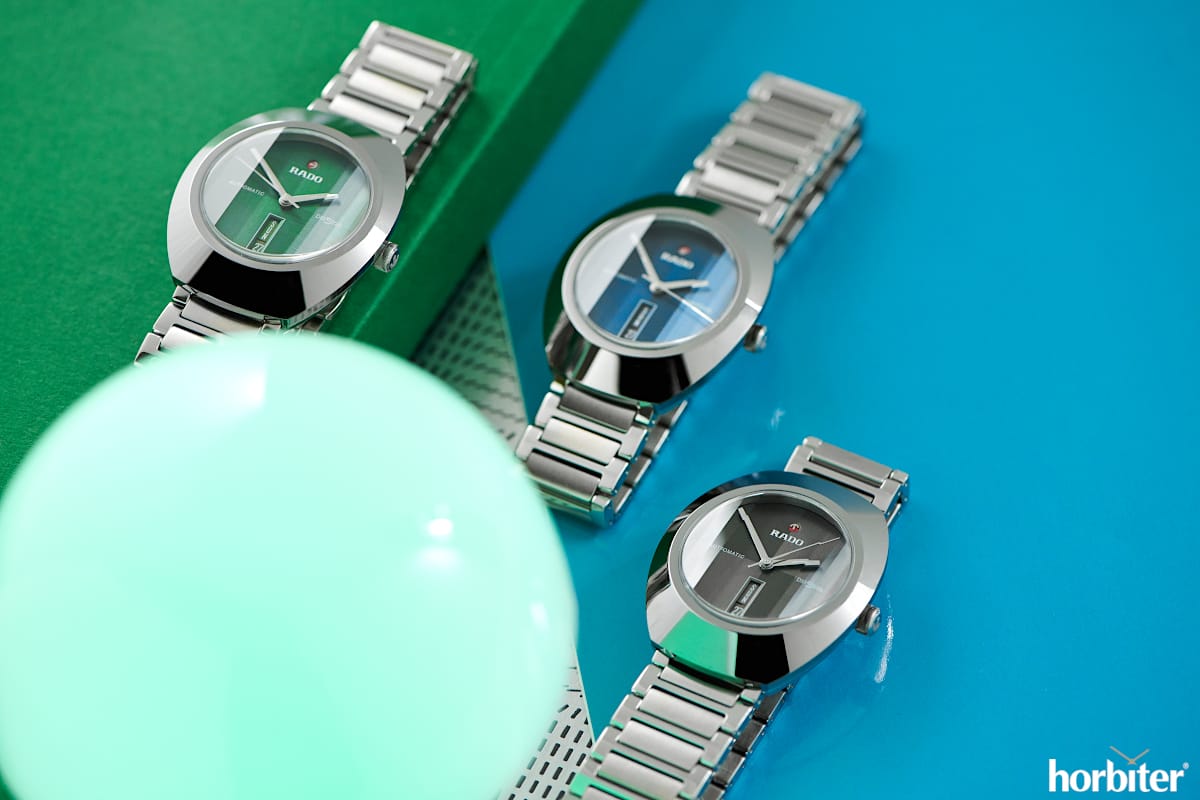Alongside the first-ever ultra-thin, diving or quartz watch stands the first-ever scratch-resistant watch. It appeared in 1962 when Schlup & Co., then-turned Rado, unveiled the first and only scratch-proof watch in history: the Rado Diastar 1. “It’s fantastic when you buy it, and it will last for the rest of your life”; here is the official marketing claim paired with an industry-leading three years warranty; sixty years in the making, I can only confirm that brand’s promise while looking at my father’s Captain Cook’s hard metal case.
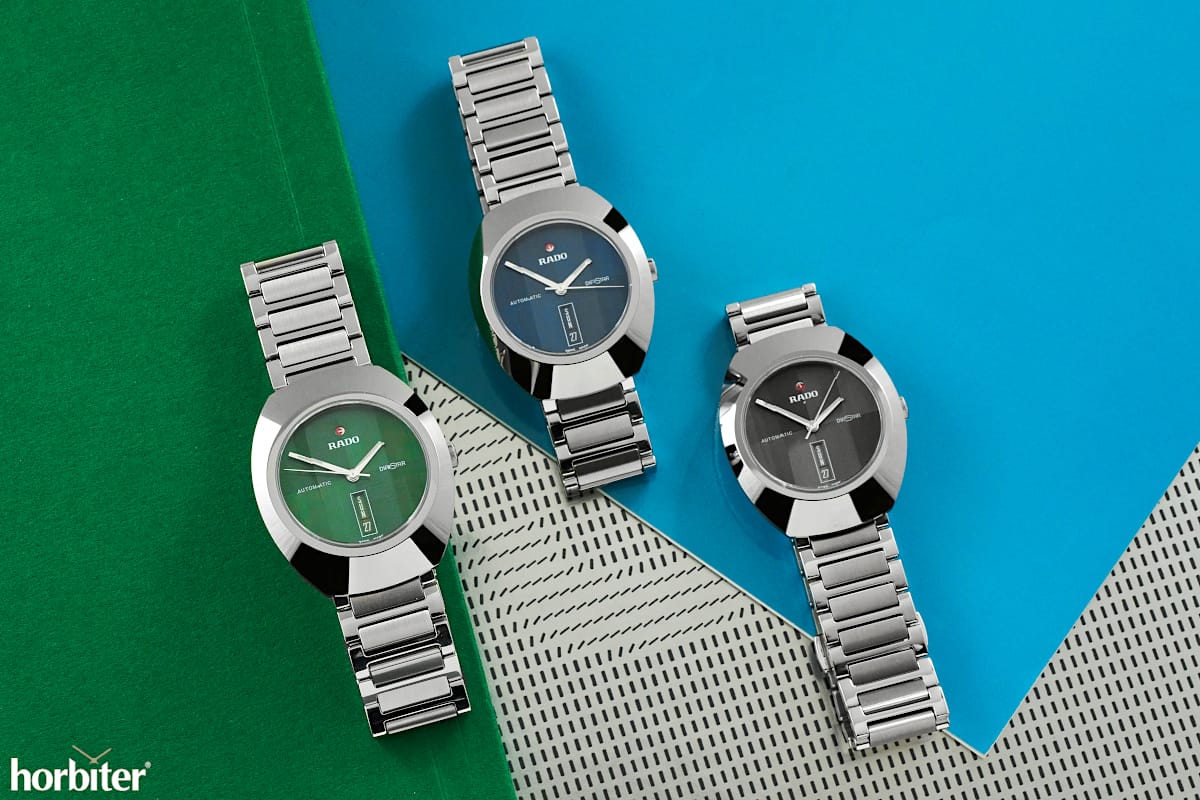
Despite the oval case design being a trend back then, the truth is that the conical-shaped geometry helped engineers master the tungsten carbide complex manufacturing process and patent Hardmetal™. A sapphire crystal was another industry first, far outperforming hesalite crystals’ poor hardness under unwanted shocks. In brief, the DiaStar 1 was the forerunner of today’s accessible luxury sports watches.
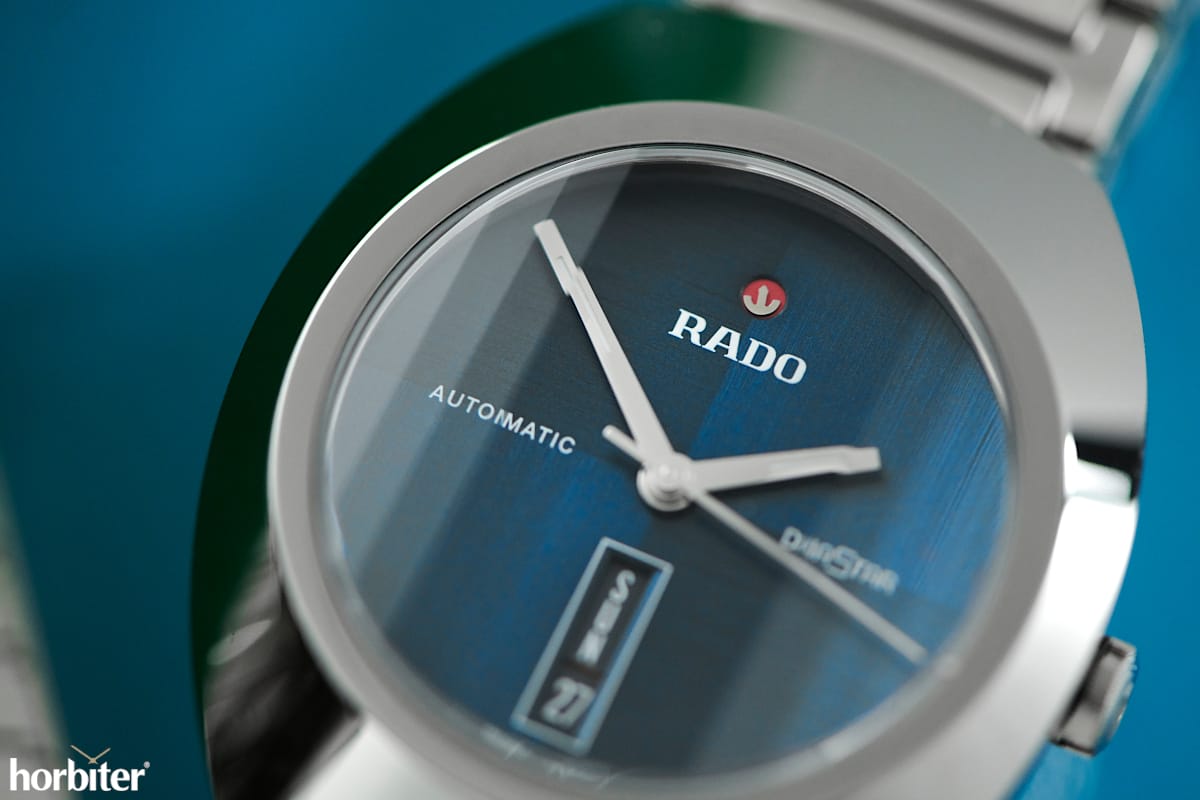
Six decades have passed since the brand’s gurus proved you couldn’t scratch a DiaStar even with a knife, and the 2022 Rado DiaStar holds to the original formula, building on the original recipe: superior scratch resistance as a means to strengthen its dominance amidst accessible luxury Swiss Made watches. The Rado DiaStar 1 paved the way to countless options – some hit the sport, and some did not – but they all share the same legacy, whatever the complication and colour combination. Rado is currently undergoing a brand renovation and is moving upmarket, and the new DiaStar collection aims at fostering the brand’s DNA as never before.
The next-gen Rado DiaStar
Rado often adopts the following design approach when overhauling a standard collection: the mainstream offering includes a reissue of the original style, while a neo-vintage limited edition model aims at grabbing the attention of contemporary design addicts. However, while beauty is in the eyes of the beholder, we think the word “sophistication” best encompasses what the 2022 DiaStar stands for.
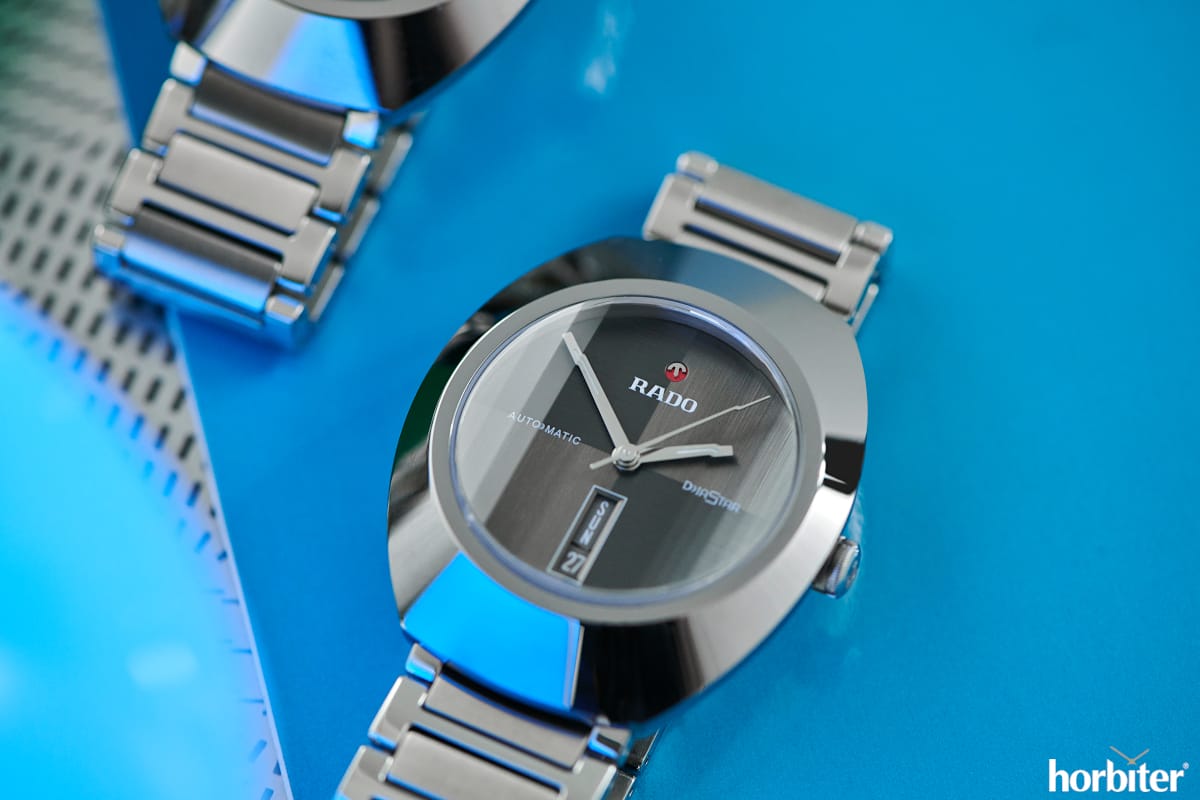
The brand’s management is trying to make the most out of its first-ever timepiece reinforcing its materials-centred engineering, thus assigning a respected Swiss designer the task of reimagining the DiaStar via a holistic approach, which offers a new out-of-the-box take.
The Rado DiaStar 60-year Anniversary Edition
Swiss designer Alfredo Häberli’s DiaStar pays homage to the DiaStar 1 but looks into the future; a hexagonal-shaped sapphire crystal mimics the 1962 dodecagonal glass. Each facet represents a decade since 1962. With that said, the watch offers unique touch points like the brushed finish on the wide Ceramos® bezel, empowering the steel-looking finish like never before on any Ceramos™ case or part.
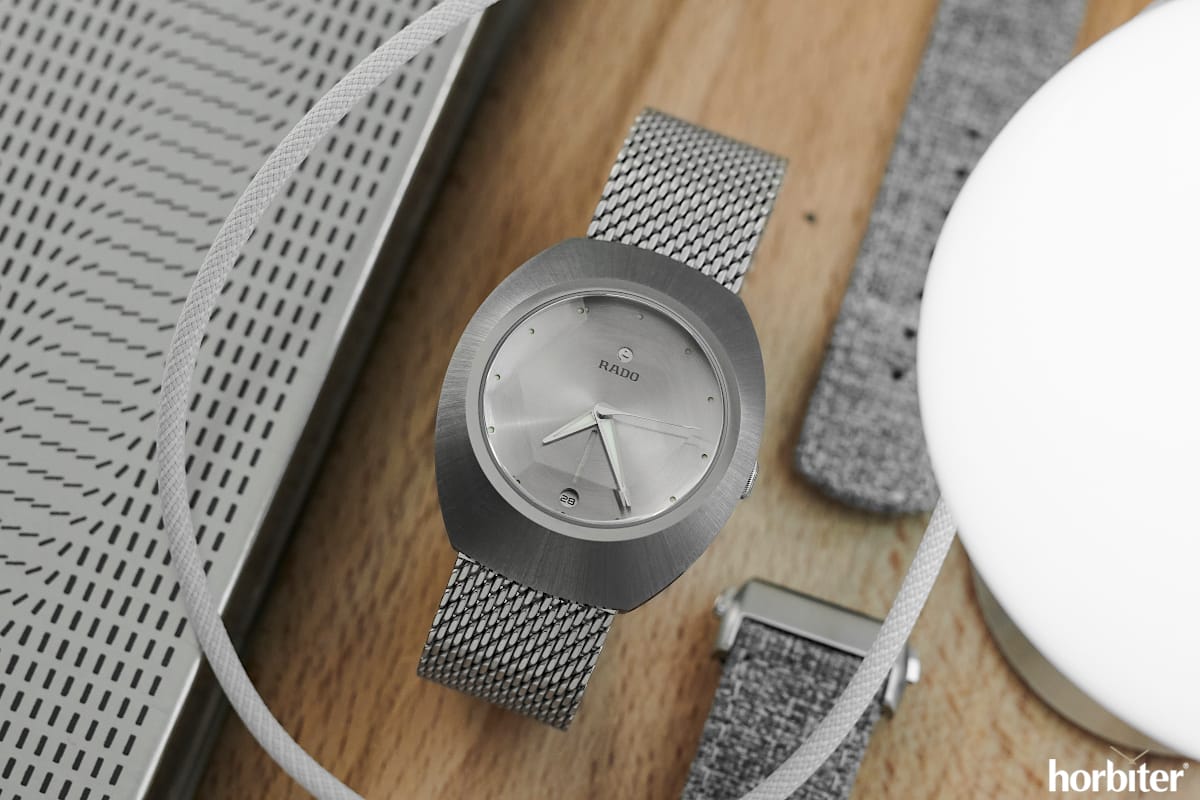
The dial is specific to this model: the “issue” is that the single-tone colour palette makes it sometimes hard to read the time and even harder to read the day of the week, especially under specific view angles. Ultra-minimalistic design is nothing new at Rado, as exemplified by other models like the HyperChrome Ultra-light.
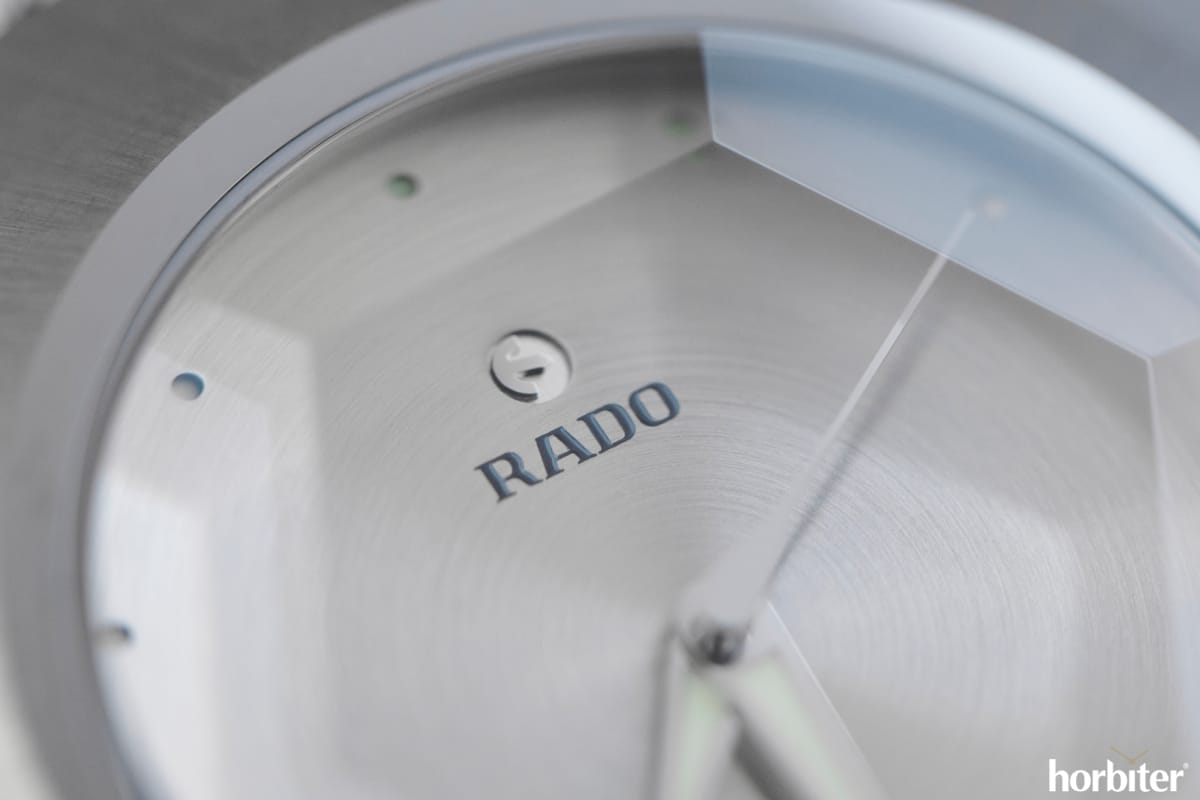
The on-wrist comfort is top-notch; the watch comes standard with a mesh bracelet adopting a flat link with pin adjustment and a folding clasp with a precise extension. It’s hard not to find the finest adjustment, and once you get it, you will be satisfied and enjoy a unique user experience. I wore it for an entire week and can only confirm they did a tremendous job making it a nice watch to live with.
The Rado DiaStar in blue, green, or grey
The non-limited models are a tribute to the 1967 DayDate, showcasing the signature day and date display extending from the centre to the outer part at six. Despite sharing the same base specs with the Häberli edition – the case measures 38 x 45 mm – the thickness slims down from 12.3 to 12.1 mm. It’s not a key quote and doesn’t affect the product’s touch and feel; the finish, dial and logos are a direct homage to the DiaStar, paired with contemporary accessories like the H-shaped bracelet or the vivid colour palettes.
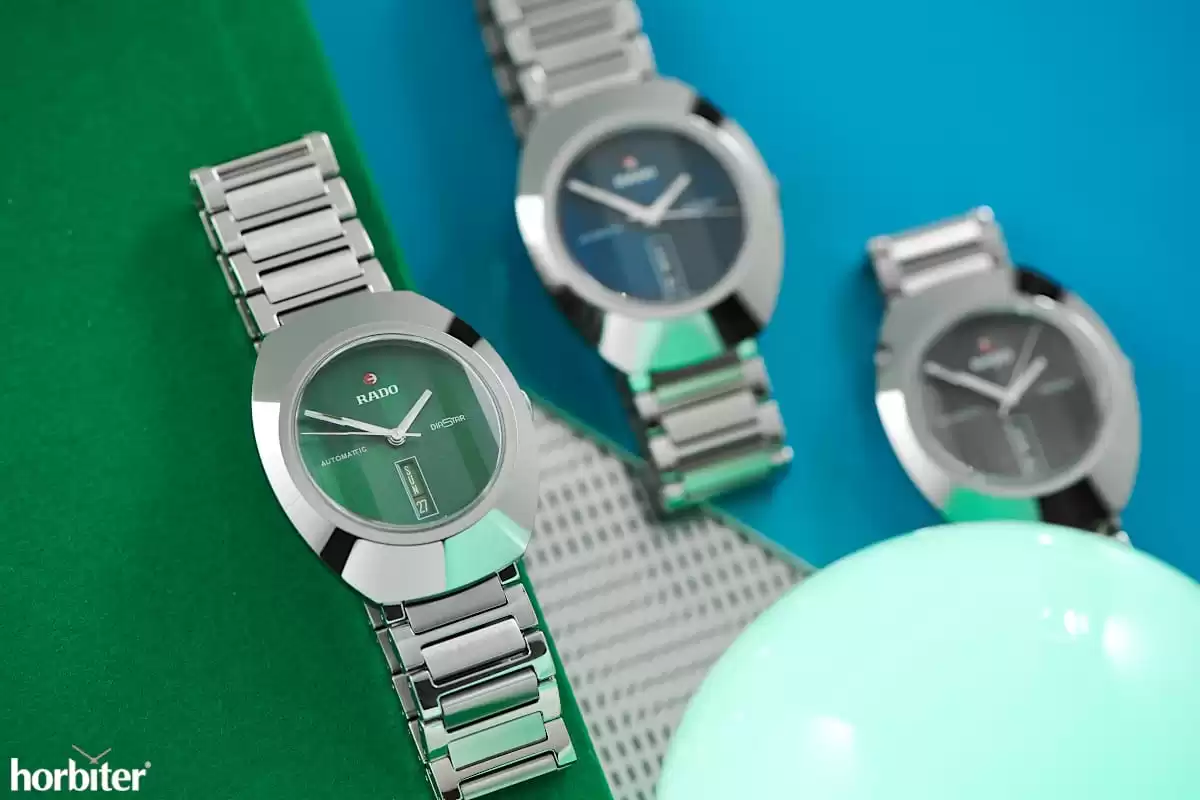
Up close, you’ll notice each dial has four separate areas covered by a multi-faceted, Art-Decò looking sapphire glass. The new Rado DiaStar is a design object too, and it’s a one-size-fits-all timepiece, hence equally geared towards him or her. The polished bezel is in Ceramos® protecting the midsection and case back in steel; this choice should offer peace of mind to daily users.
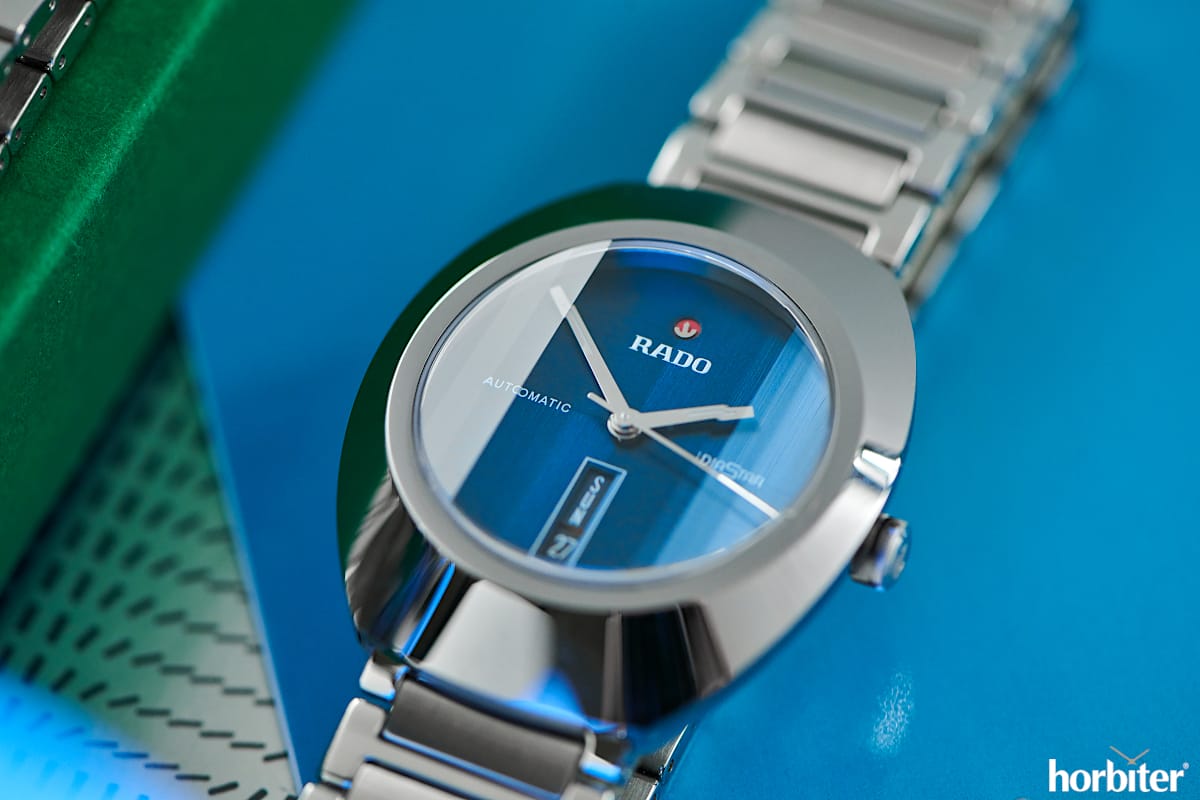
The DiaStar looks as sturdy as no other watch on sale, and that’s what you finally get during your ownership experience. Here is what the Design Team was eager to achieve, and they nailed it. Rado being Rado, why didn’t they opt for an NSA-type bracelet like on plenty of vintage Rado watches?
The Rado calibre R 764
All options adopt Rado’s R 764 movement, operating at 4 Hertz, with eighty hours of power reserve when fully wound, and a Nivachron hairspring. It is gold-plated as were Rado’s gone calibres, but the owner cannot access the back view, so what’s the point of gold-plating it? All models come with a solid case back. And all models ensure 100-meter water resistance.
Final thoughts
The new Rado DiaStar 2022 are lovely, and the best reissue since the original Rado DiaStar hit the market. The Rado DiaStar 60-year Anniversary Edition is the only one to offer the EasyClip system to replace the bracelet with a grey fabric strap. And that’s the only one to provide a folding clasp with micro adjustment.
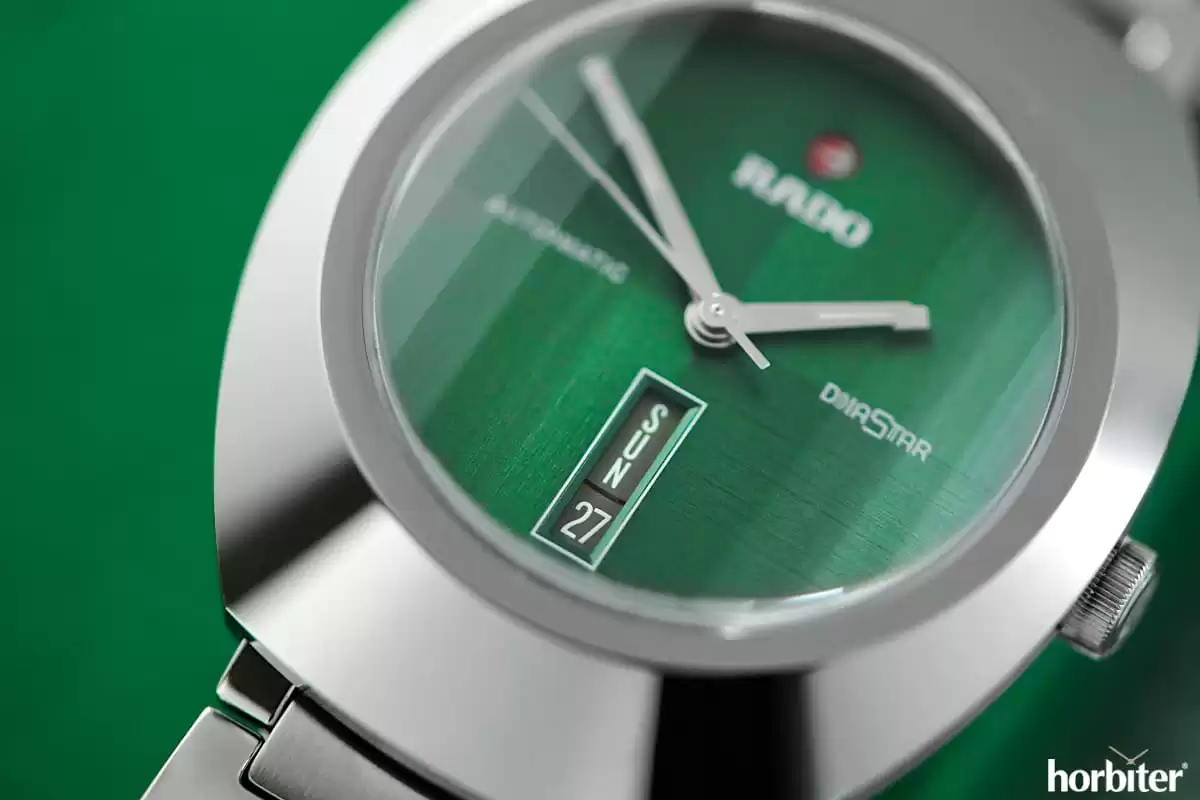
Paired with the OEM Mesh bracelet, it is the most comfortable Rado on a bracelet ever. The ordinary Rado DiaStar adopts a large H-link bracelet and matching butterfly clasp. The development team did a great job offering the sophisticated 60-year commemorative edition and a trio of watches that’ll keep fostering the DiaStar saga for generations to come: original yet no-frills design, excellent build quality and advanced materials. The commemorative edition comes with a specific set, including a travel case, and sells for 2,190 Euros, while the standard range stops at 1,580 Euros.
(Photo credit: Horbiter®)
Editorial team @Horbiter®
